Rome has a heritage of over 900 churches, it is the city with the largest number of churches in the world. Among the infinite number of churches, we have chosen for you, the 10 that you absolutely must visit. They are the oldest, the most beautiful, the ones that hold wonderful stories. They are majestic buildings, treasure chests, places that must be crossed and discovered at least once in a lifetime. The churches of Rome will allow you to access its history.
In less than a year, on December 24, 2024, the Pope will open the Holy Door of St. Peter's and begin the Jubilee. Like a domino effect, after the Holy Door of St. Peter's Basilica, the Holy Doors of the 4 major Basilicas of Rome will be opened. The Jubilee, which will take the name Peregrinantes in spem (trad: Pilgrims in hope) is a very special year for the city of Rome, dedicated to welcoming the many pilgrims and visitors who will arrive in the capital of Christianity. Its importance is recognized and respected by faiths around the world.

The 10 churches of Rome not to be missed
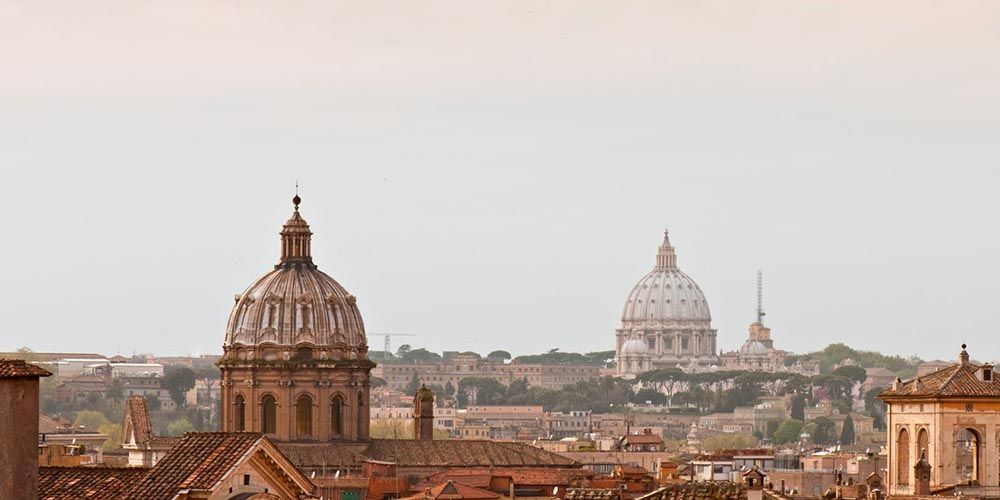
In every corner of Rome, it is possible to hear distant or near bells echoing, which cheer up the soul and attract one towards the church. At certain times it is possible to hear a veritable riot of bells mixing different melodies. But where to start visiting the numerous churches of Rome and how to choose them? We have thought of an itinerary for you consisting of the 10 churches in Rome that you absolutely must visit. There are 10 Basilicas, which have therefore received official recognition due to their historical, architectural, and religious importance.
You will be able to include the 10 churches in a single itinerary, perhaps spread over several days, or take the opportunity to visit each church individually, and then take advantage of getting to know the neighborhood in which it is located. We will give you advice and suggestions to best structure your visit. 7 of the churches we will tell you about are part of the 7 churches tour, a Christian pilgrimage practiced since the Middle Ages on jubilees. We suggest you organize yourself in advance, to make your visit to Rome easier we recommend the Rome Pass, a single card that gives access to the main attractions of Rome, including unlimited access to public transport to get around without spending a lot. Come with us to discover the 10 churches in Rome that you absolutely must visit and their artistic and spiritual heritage.
Explore Rome with Visit Rome Pass10. St. Peter's Basilica in the Vatican
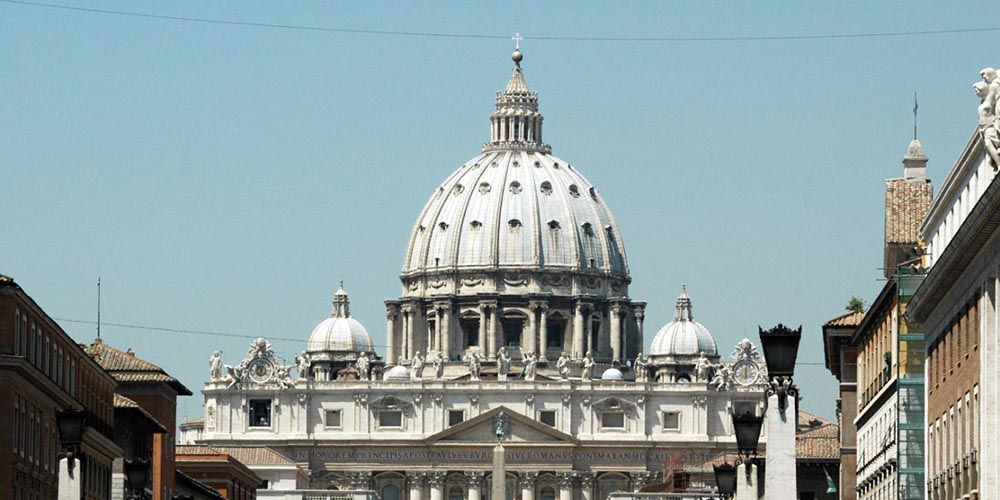
A masterpiece of Italian art, as well as being one of the most iconic symbols of the city of Rome, St. Peter's Basilica in the Vatican is the largest church in the world and represents the heart of spirituality. Due to its grandeur and beauty, it is considered one of the most important achievements in the history of architecture and is included in the UNESCO World Heritage Site.
The Basilica stands on the ancient site where tradition has it that Saint Peter, the first of Jesus' apostles, was buried. It was the patron of art Pope Julius II who commissioned the construction work in 1506, calling upon all the workers of the time. The construction therefore saw the contribution of the greatest artists and architects of the Renaissance, the first project was the work of Donato Bramante, the project was continued by Raffaello Sanzio, while we owe the grandiose dome, present in all the skylines of the city of Rome, to Michelangelo Buonarroti, and the square in front of the church, with the imposing colonnade and its optical effects is the work of Gian Lorenzo Bernini.
Both the exterior and the magnificent baroque-style interior of the Basilica have an enormous number of attractions, such as the statue of la Pietà by Michelangelo, the bronze statue of St. Peter and the rich canopy. We advise you to pay a careful visit and absolutely climb the dome, the same one where Anita Ekberg climbed during the film La Dolce Vita by Federico Fellini. The climb to the dome can be done either on foot or by lift, and it is a unique experience.
Discover St. Peter's Basilica9. Basilica of San Giovanni in Laterano
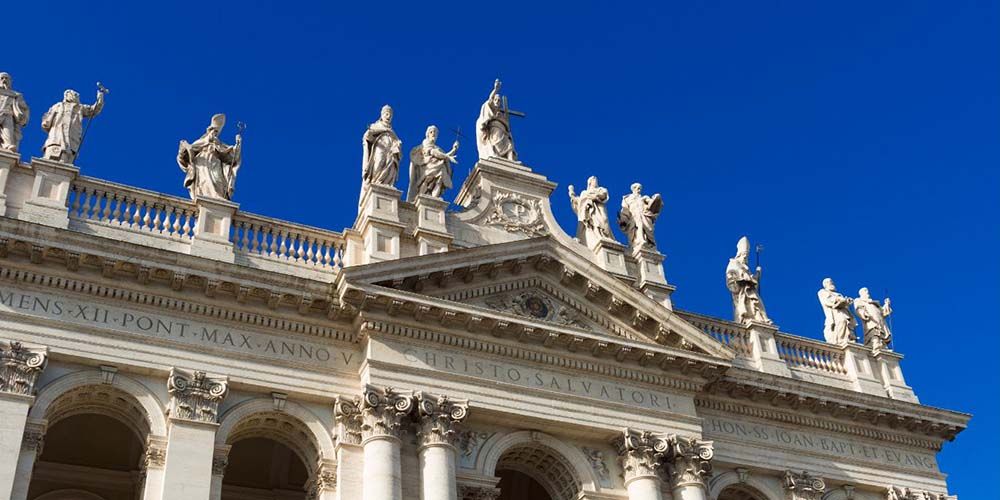
Also called the Cathedral of Rome, the Basilica of San Giovanni in Laterano is the oldest and most important Basilica in the West, seat of the diocese of Rome currently governed by Pope Francesco. It is also called archbasilica because it is the most important of the 4 major papal basilicas. It is located near the Caelian Hill and in addition to the Basilica it includes a vast surrounding complex which also includes the Pontifical Lateran University. Founded between 311 and 312 AD. at the behest of emperor Constantine, fresh from conversion.
The renovation works on the ancient Basilica date back to the 17th century and were carried out by Borromini. Over the centuries it was constantly enriched with works of art and monuments, among which the famous fresco by Giotto, the coffered ceiling by Francesco Ligorio and the cloister, a masterpiece of Cosmatesque art by Pietro Vassalletto, member of the famous family of marble Romans workers. Worthy of note in the immediate vicinity of the Basilica are the Holy Stairs and the Chapel of the Holy of Holies, a sought-after pilgrimage destination for Catholics from all over the world. According to tradition, Saint Helena, the mother of the emperor Constantine on her journey to the Holy Land, had dismantled the ladder Jesus climbed to enter the Sanhedrin in the presence of Pontius Pilate. The steps must be walked strictly on your knees.
Discover the Scala Santa and the Sancta Sanctorum8. Basilica of Santa Croce in Gerusalemme
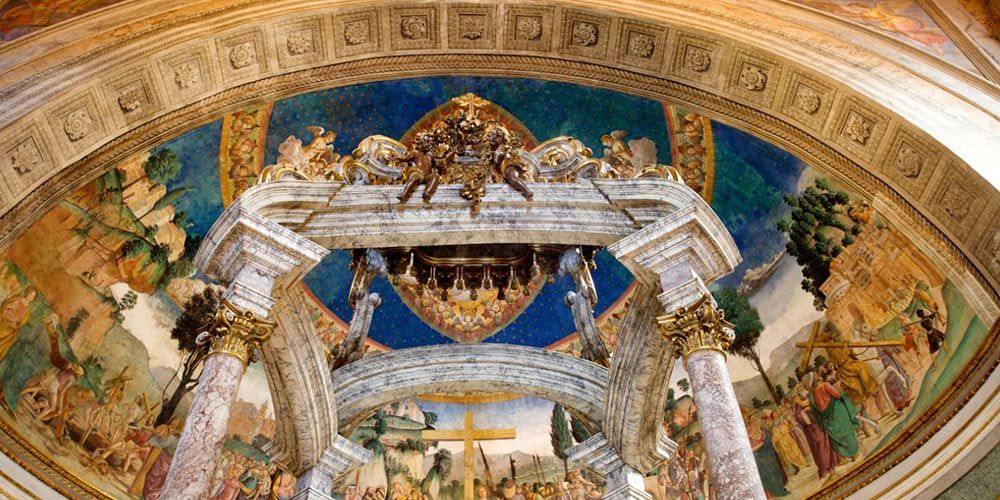
Between the Basilica of San Giovanni in Laterano and Porta Maggiore, you will find another of the 7 churches, the Basilica of Santa Croce in Gerusalemme. You are in the Esquilino neighborhood close to the Aurelian walls. At the beginning of the 4th century this complex was chosen by Saint Helena, mother of the emperor Constantine, as her home and it was thanks to her that it was transformed into a Christian Basilica. It was also Saint Helena who decided to place the relic of a part of the cross of Christ in this building, hence the name of the church. The current appearance of the Basilica dates to the eighteenth century.
The current facade of the church is in Baroque style and the interior is divided into 12 colossal granite columns. In the area adjacent to the Basilica, the vegetable garden of the ancient Cistercian monastery was recreated in 2004. The carefully cultivated flowerbeds host herbs, fruit trees and various species of flowers whose arrangement hides symbolic meanings and is aesthetically pleasing. The impression you receive when crossing the entrance gate is one of extraordinary balance, peace, and serenity.
7. Basilica of St. Paul Fuori le Mura
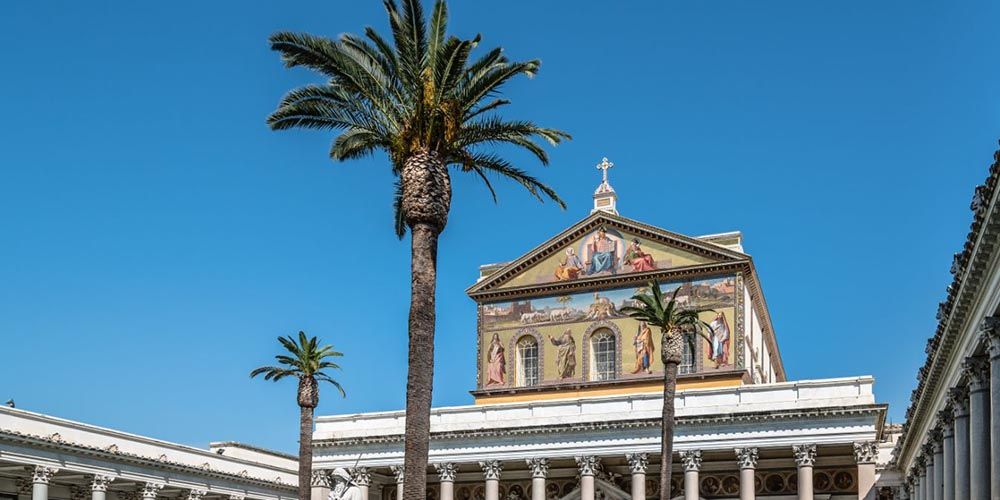
The Basilica of San Paolo Fuori le Mura stands on Via Ostiense in the San Paolo district. You can see it from afar due to its splendid mosaics arranged on the façade, which, depending on the time of day, reflect a golden light. The Basilica stands on the remains of the apostle Paul, it is a magnificent refuge of peace due to the large garden with palm trees, which surrounds the Basilica and ideally reproduces the biblical Eden. A botanical-scientific journey but also theological, philosophical, and literary. Among the different environments you can admire the Garden of Simples in which the medicinal plants used in the production of the phototherapeutic remedies available at the Monastic Apothecary are grown, according to the age-old Benedictine tradition.
The interior is majestic, divided into five naves by eighty monolithic granite columns. The wider central nave has mosaics on the walls with portraits of popes, which also continue in the side aisles, and frescoes with stories from the life of Saint Paul. Under the central altar is the tomb of the apostle Paul. The apse is dominated by the majestic mosaic where the gold color predominates, commissioned by Innocent III (1198-1216) and finished at the time of Honorius III. In the center the figure of Christ, on his sides Saints Peter, Paul, Andrew, and Luke the Evangelist.
6. Basilica of Santa Maria Maggiore
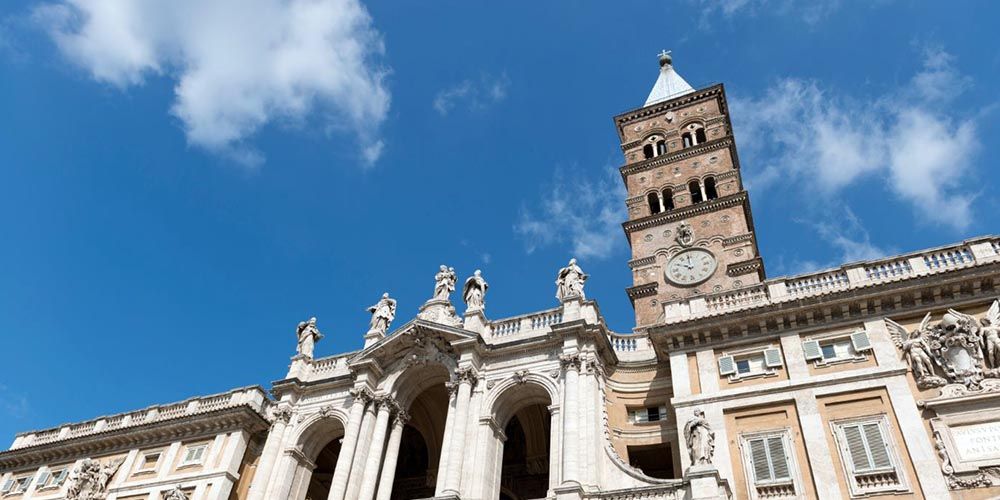
The Basilica of Santa Maria Maggiore is located on the top of the Esquiline hill, it is also part of the 7 churches of Rome. It stands out with its high bell tower and is a very special church, with a fascinating history behind it. Legend has it that a rich patrician and his wife, having no children, decided to dedicate a church to the Virgin Mary, who appeared to them in a dream one August night in 352 AD. In the dream, Our Lady informed them that a miracle would show them the place on which to build the church. The Pope of the time also had the same dream and the following day he went to the Esquiline Hill and found it full of snow, even though it was summer.
Every year, on August 5th, the miracle of the snow is remembered in a celebration, during which white petals are released into the air from the top of the Basilica. The Basilica of Santa Maria Maggiore is one of the churches in Rome that is truly worth a visit, it is a magnificent example of early Christian art and architecture, inside there are precious mosaics.
5. Basilica of San Clemente
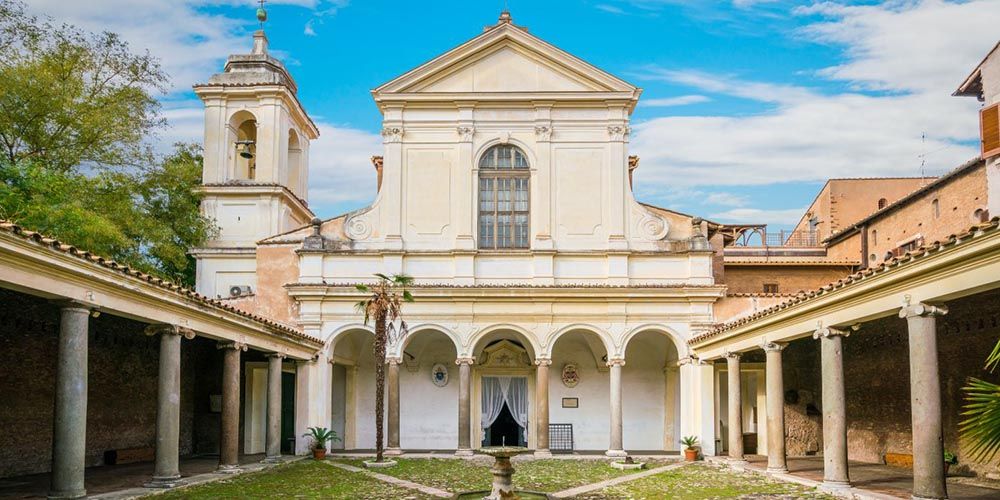
The Basilica of San Clemente is a real gem that we want you to discover, the Basilica is located a 5 minute walk from the Colosseum, between the Oppio hill and the Celio hill. The church is made up of two overlapping churches, built on top of Roman buildings from the Republican age and on the remains of a temple dedicated to the god Mithras. The floor is inlaid with polychrome marble and is a very beautiful example of Cosmatesque style. In the chapel of Santa Caterina, you can admire the frescoes with life stories of the saint by Masolino da Panicale.
Among the churches of Rome, it is the only one that has 3 levels from different historical eras. The current Basilica is of medieval origin, the façade is sober and elegant, on the left side is the bell tower, built in the 18th century. Inside the apse is a splendid mosaic. If you find yourself at the Basilica of San Clemente to experience the neighborhood a trip to the Colosseum is due, which is just a few hundred steps away.
Discover priority access to the Colosseum4. Basilica of San Marco Evangelista
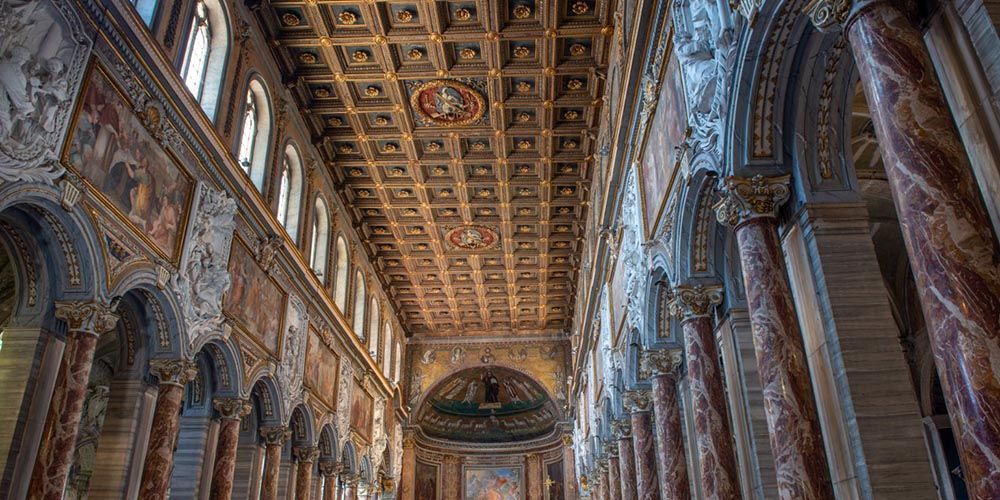
Very central, the Basilica of San Marco Evangelista is in Piazza Venezia, in front of the Vittoriano. The church dates to the 4th century and was built by Pope San Marco. Restored several times over the centuries, it was rebuilt in its current form in 1468 by Pope Paul II, who made it the church of the Venetians in Rome. The church is dedicated to San Marco Evangelista because the bones of many martyrs were found in the basement of the ancient Basilica, including those of San Marco.
Like various churches in Rome it features multiple styles, the facade is a rare example of Renaissance style elegance. While the bell tower is Romanesque with three-lancet windows, decorated with ancient ceramics. Here too you will find a splendid apse mosaic and a tomb from 1796 by Antonio Canova.
Discover the Basilica of San Marco Evangelista3. Basilica of Santa Cecilia in Trastevere
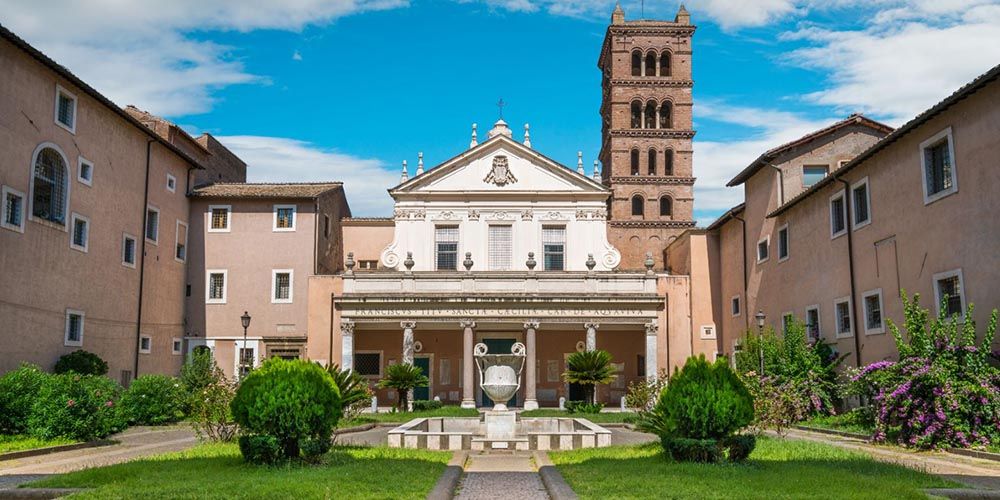
The Basilica of Santa Cecilia in Trastevere stands on the noble home of Cecilia, a woman martyred in 230 AD. The poor martyr accused of having tried to convert her husband to the Christian religion was martyred for 3 days; on the third day, seeing that the woman was not yet dead, her tormentors beheaded her. According to legend, the Saint appeared to Pope Pasquale I in a dream, revealing to him the exact spot where her body was buried.
The style in which the church was built is late early Christian, while after the various renovations the facade and interior are in Baroque style. It is surprising to encounter this large church in the alleys and narrow streets of the Trastevere district, where, as the name of the church itself suggests, it is located. The Trastevere district is very suggestive, here it is pleasant to take a long walk to discover all the jewels it contains.
Discover Trastevere district2. Basilica of San Lorenzo fuori le mura

The Basilica of San Lorenzo fuori le mura, also known as San Lorenzo al Verano, given its proximity to the monumental cemetery of Verano, is one of the 7 Basilicas of Rome which is part of the ancient pilgrimage practiced by the faithful for the Jubilee, since from the Middle Ages. They are the oldest and most important churches in the city of Rome.
The works began in the 6th century and what we observe today is the result of the fusion of two distinct churches, built around the tomb of San Lorenzo. The Basilica is in front of a large square, the facade was rebuilt after the bombings of '43, the colonnaded entrance portico has medieval capitals. The simplicity of the facade will ensure that you marvel at the grandeur of the interior. The Basilica is located near the monumental cemetery of Verano.
1. Churches of Rome last tip: Basilica of San Sebastiano fuori le mura

The 10 churches in Rome that you absolutely must-see end with the last one we have chosen for you, the Basilica of San Sebastiano fuori le mura. We chose it because the church is immersed in one of the most beautiful and evocative places in Rome, the Appia Antica park, one of the ancient consular streets used by the ancient Romans. The Basilica of San Sebastiano is also part of the tour of the 7 churches.
The church is dedicated to San Sebastiano because the remains of the Christian martyr rest here. The Basilica still constitutes the fulcrum of the largest and most well-known area of early Christian cemeteries in Rome; in fact, you are near several accesses to the catacombs. The church as it happens presents different styles because it was begun in the 4th century and remodeled and completed in the 17th century. We suggest a visit because you can complete the day walking or relaxing in the immense green park of the Appia Antica, if you want to get less tired, we suggest renting a bike, it will be pleasant and fun.
Discover the Appia AnticaAbout the author
Written on 29/02/2024

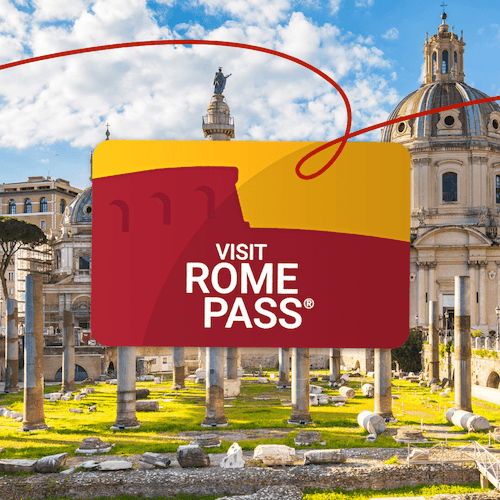
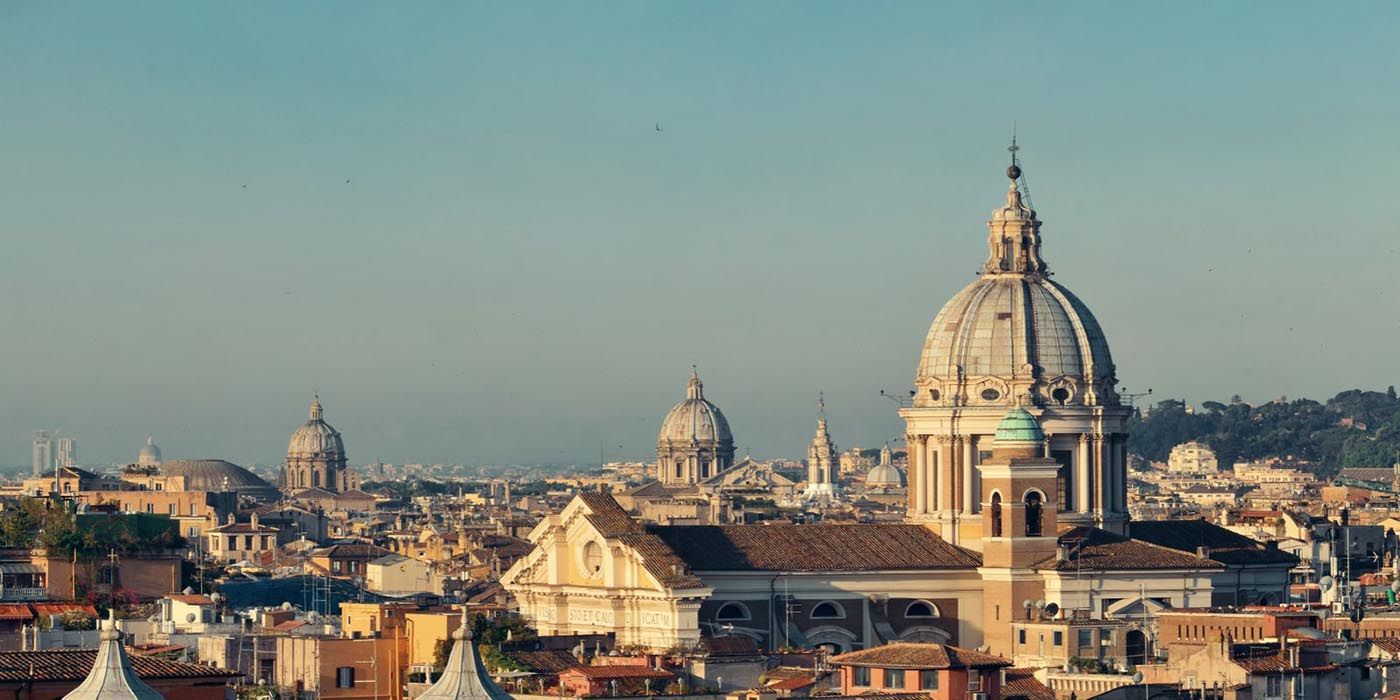

Chiarastella Campanelli
Ancient guardians of spirituality and chests full of treasures. Here are the 10 churches in Rome that you absolutely must visit